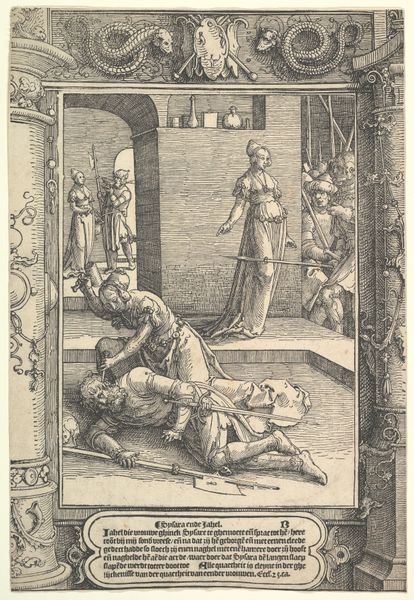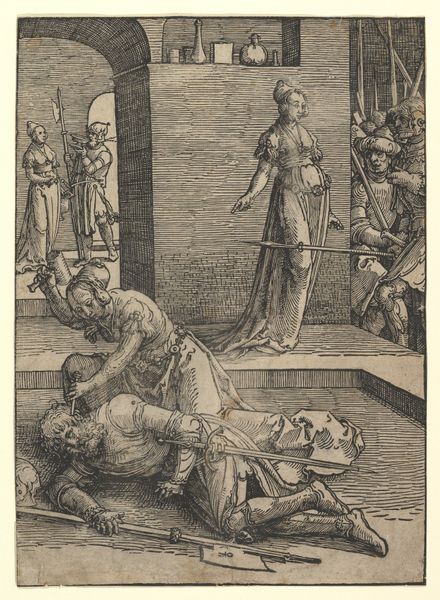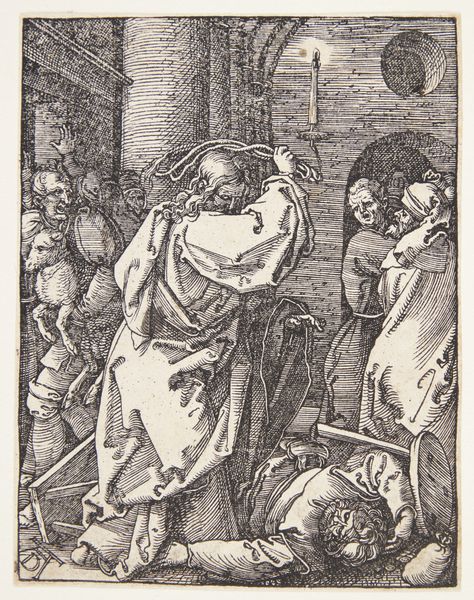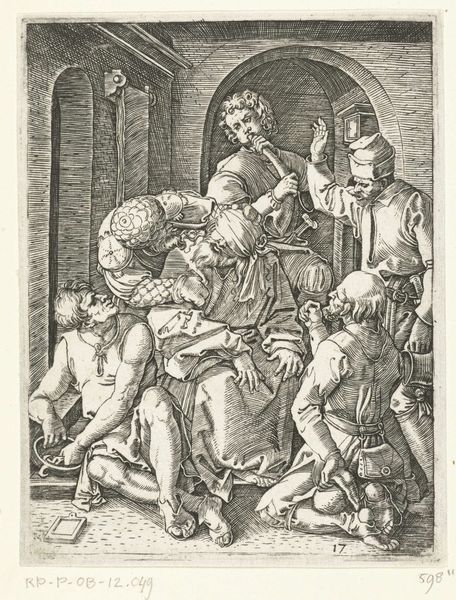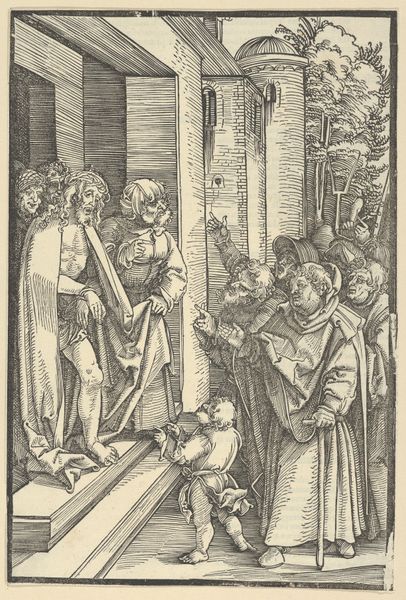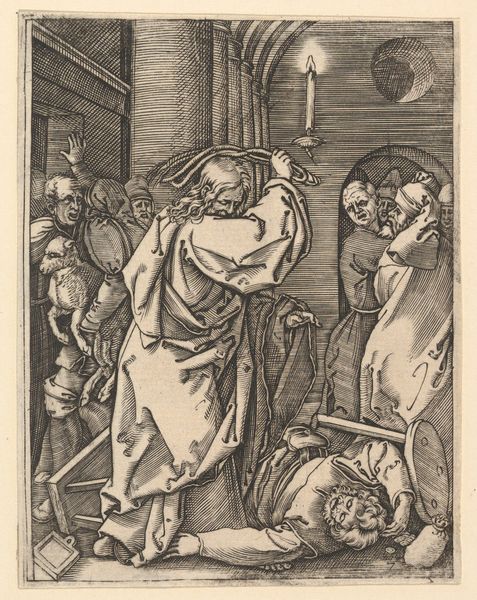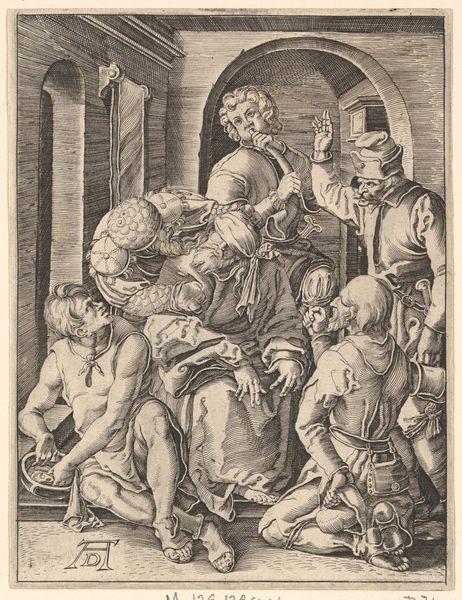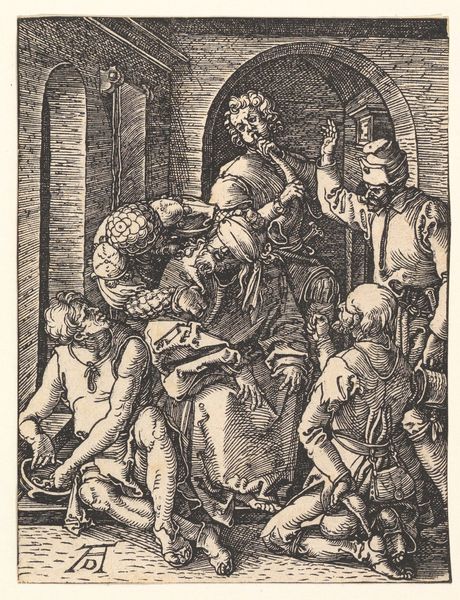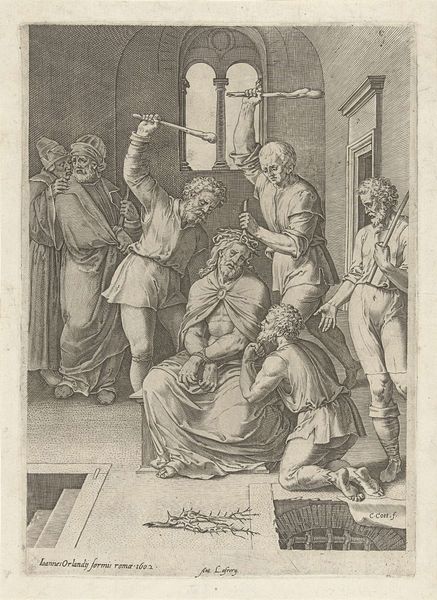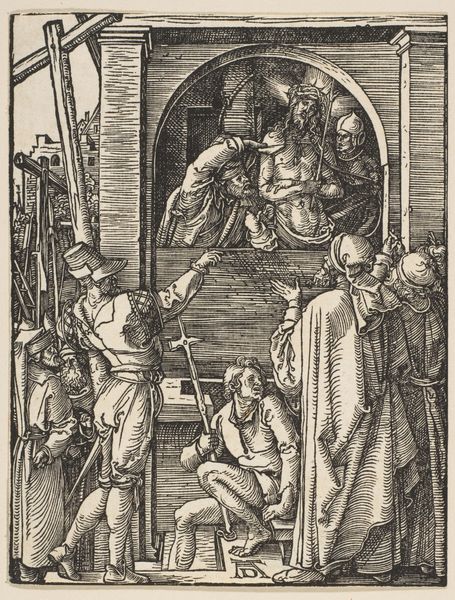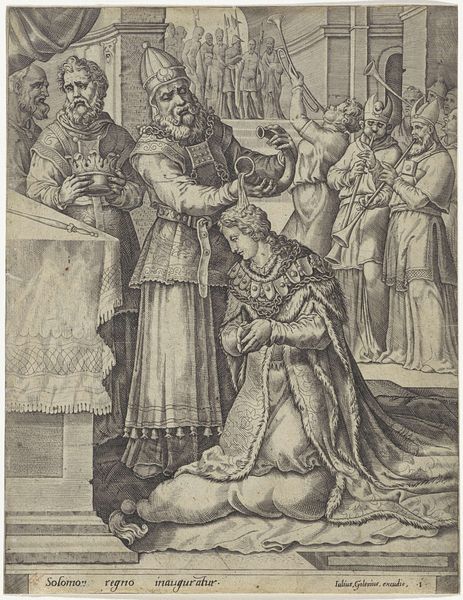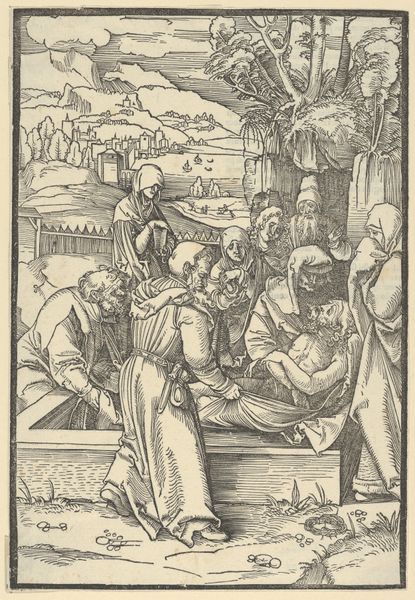
print, woodcut
#
portrait
#
medieval
#
narrative-art
# print
#
figuration
#
woodcut
#
history-painting
#
northern-renaissance
Dimensions: 9 5/8 x 6 13/16 in. (24.45 x 17.3 cm) (image, trimmed within border)
Copyright: Public Domain
Editor: Here we have Lucas van Leyden's woodcut, "Jael Killing Sisera," created sometime between 1516 and 1519. It's…intense! The contrast between the delicate lines of the women and the brutal act itself is quite striking. What are your thoughts on how the composition enhances the narrative? Curator: Observe how van Leyden structures the composition with rigorous attention to line and form. Note the stark contrast achieved through the black ink against the white paper. The composition is clearly divided into a foreground where the brutal act unfolds, and a background containing witnesses, creating layers of meaning and tension. The figures are rendered with remarkable detail, considering the limitations of the woodcut medium. How do you see the relationship between form and content expressed here? Editor: The stiffness of the lines almost makes it feel detached, but then you notice the intense detail, and it pulls you right back in. I’m intrigued by the positioning of the characters—Jael, Sisera, and then those onlookers framing the scene. Curator: Precisely. Consider the artist's emphasis on structure. How does the rigidity of the architectural elements and the subjects' attire enhance the symbolic nature of the print? Does it perhaps reflect a contemporary concern for order and the construction of identity? Look at how the light interacts with each element and how it changes its very own materiality. Editor: I never considered the architecture as playing such an important role, to me the subject matter was what was highlighted the most. This breakdown makes the piece more than the story, it highlights the forms as structural devices. Curator: Exactly. We must consider that the medium carries a narrative power that echoes cultural assumptions present in Leyden’s epoch. Thinking in terms of construction and symbolism, have our thoughts shifted? Editor: Absolutely! Seeing it through the lens of formal structure and symbolism really opens up new perspectives on its artistic intent and how the story is told visually. Curator: Indeed. By emphasizing the interplay of line, form, and materiality, we’ve unlocked deeper insights into Leyden's "Jael Killing Sisera" that go beyond merely historical understanding.
Comments
minneapolisinstituteofart about 2 years ago
⋮
According to the Book of Judges from the Hebrew Bible (Old Testament), Sisera was the commander of the army of King Jabin and had oppressed the Israelites for more than twenty years. When Sisera's army was defeated in battle by the Israelite commander Barak, Sisera fled to the village of Heber of Kenite, with Barak hot on his trail. Seeking refuge, he encountered Heber's wife, Jael, a Hebrew, who sheltered him in her tent and gave him milk. Exhausted, Sisera fell asleep. Seeing her chance to avenge her people's suffering, Jael drove a tent stake into his brain with a workman's mallet, crushing his skull and pinning him to the ground. He lay dead, murdered by the heroine's deception. Some believe that Jael, whose name means Jehovah is God, was compelled to murder by the Holy Spirit. Other interpretations also suggest Jael exhausted Sisera with sexual intercourse, a sin absolved for its laudable goal of glorifying God.
Join the conversation
Join millions of artists and users on Artera today and experience the ultimate creative platform.
